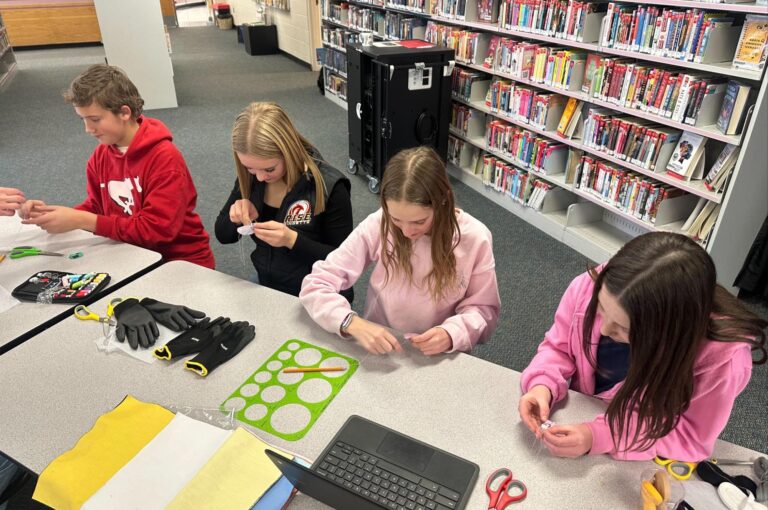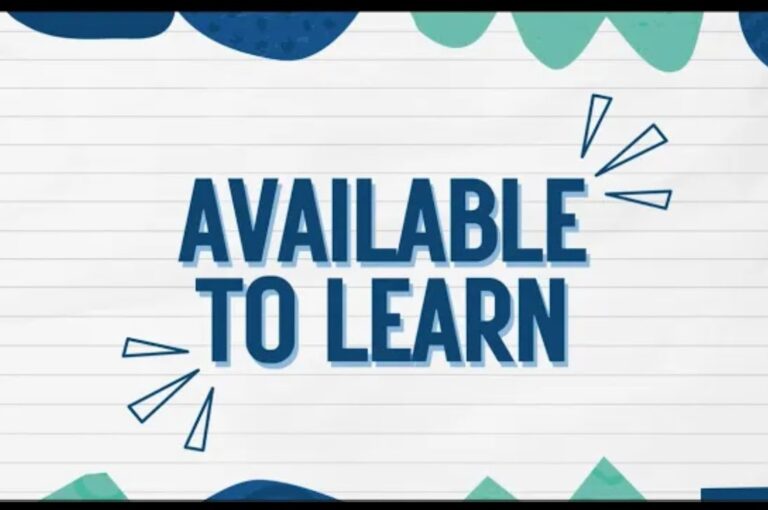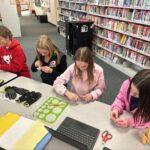There are a number of ideas and strategies you can implement in order to help your student become independent. First, begin by discussing what independence looks like and then develop routines and strategies that can foster this. You can help students to understand the criteria to be successful with achieving independence. The criteria can be either presented or co-construct with students using examples from the classroom. It may be helpful to make an anchor chart of the criteria for ongoing reference. This is similar to what we might do to help students to understand success criteria for achieving a learning outcome. Just remember that independence is that gift you can give your students and you can do this by giving the tools and strategies.
Establish routines and procedures that foster independence. For example:
- Use cue cards (green for good to go and I understand what to do, yellow for I have a question, and red for I do not understand and need help to get started)
- Use thumbs up for a check of understanding.
- Teach students to use the help around them so “3 before me” technology tools etc.
- Plan ahead for barriers or roadblocks. “what can I do if I am stuck on a word, or math problem, what is my plan” Give students bookmarks or cue cards to prompt for this
- Use choice boards of tasks or things they can do independently read
- Ensure students know how, when and to whom they can reach out for help.
- Use visuals, prompts and schedules for building independence
- Label and organize resources in the classroom and teach students how to navigate independently
SETTING AND TRACKING GOALS
- Use goal setting as a powerful way to grow independence. This gives students ownership of their learning
- Help students to become self-directed learners
- Teach them to set attainable and realistic, small goals
- Build in regular review of goals and plans for reaching goals daily.
FOSTER METACOGNITION:
- Make your own thinking visible and help students be aware of how they learn
- Model self-talk and encourage metacognition, which is “thinking about thinking”
TEACH STUDENTS HOW TO STRUCTURE THEIR TIME
- Help students to be aware of the mental effort needed for a specific task and set realistic expectations about effort
- Help your students to plan a schedule required to complete the task
- Encourage replenishing mental effort- through rest, physical activity and healthy food.
CREATE TASKS AT THE RIGHT LEVEL OF DIFFICULTY
- Know your students and ensure tasks are challenging enough to engage but not to challenging that they are discouraged and can not achieve or master the task
- Adjust the level of difficulty and the level of supports to ensure independence
PRAISE PERSISTENCE
- Be specific in your praise and direct it to effort not the task or their intellect.
- When effort and persistence are praised students are more likely to keep trying.
- This encourages that growth mindset.
MINIMIZE TALK:
- Give clear and concise directions and avoid length explanations. Clarity fosters independence.
- Give students the big picture and ask them to predict what they will learn or be expected to do.
- Instead of introducing the task through talk, pose a question or problem and have them explore and predict.
USE QUESTIONS TO DEVELOP INDEPENDENCE
- Ask powerful questions and questions that encourage independent thinking. Use questions to help students think about the next steps in their learning and questions that help them think independently. For example, “What do you think needs to be next and why do you think that?”
- Use open ended questions that promotes different perspectives and invites thinking
ENCOURAGE STUDENTS TO SELF-REFLECT ON THEIR LEVEL OF INDEPENDENCE
- Self reflection on their own independence can help to increase awareness and intension behind the benefits of independence.
- One way you can do this is to create categories for problem-solving, dealing with set backs, trying things out, seeking challenge and managing time/workload. Then ask students to rate themselves on a scale of 1-5, selecting their weakest area to grow and create a plan to improve.
GIVE THE END AWAY
- The Critical Thinking Consortia (TC2) encourages independence by starting with a launch that may be an overarching question or problem statement. The final task or product is shared at the start so students know where they are going. As students learn new information they revise their thinking.
- One way to encourage independence is to describe the task goal and ask students to determine the steps or activities that they think might help them achieve their goal.
DELAY ASSISTANCE
Independence is encouraged when you wait and do not rush in.
Ensure that you have given clear instructions and that you have checked for student understanding. Then give students time and space to think, create, discuss with others and experience what is referred to as a productive struggle that results in learning.
Give students time to solve problems and do the thinking and try not to jump in too quickly.
Instead of rushing in give words of reassurance i.e.
- “You can do it.”
- “You know what to do, just take a moment to think about what you know”
- “Trust yourself on this”
- “Give it another time, you have this”
Give students a problem-solving checklist they can use to work through independently. Prompt them to use these steps first before accessing you.
For example:
- “Have I read the question carefully and underlined key words. What am I being asked to do?”
- Have I looked over my work from the last day and looked at notes to see if this can help me?
- Have I checked the bulletin boards or anchor charts posted in my classroom?
- Have I use my notes, readings, google etc.







